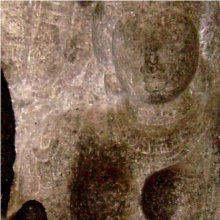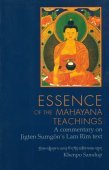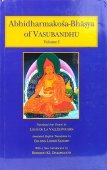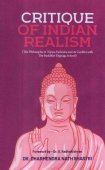Ornament: 4 definitions
Introduction:
Ornament means something in Hinduism, Sanskrit, Jainism, Prakrit. If you want to know the exact meaning, history, etymology or English translation of this term then check out the descriptions on this page. Add your comment or reference to a book if you want to contribute to this summary article.
Images (photo gallery)
(+117 more images available)
In Hinduism
Purana and Itihasa (epic history)
Source: Shodhganga: Elements of Art and Architecture in the Trtiyakhanda of the VisnudharmottarapuranaOrnaments (in Sanskrit: Bhūṣaṇa) were traditionally crafted by professional artisans, as part of the “sixty four kinds of Art”, according to the Kamasutra of Vatsyayana.—Cf. the Sanskrit Bhūṣaṇayojana.—Indian tradition, basically includes sixty four Art forms are acknowledged. The history of Indian Art covers approximately five thousand years which presents a rich and almost continuous record. The references of sixty four kinds of Kala (कला, kalā) are found in the Bhagavatapurana, Shaiva-Tantras, Kamasutra of Vatsyayana etc.

The Purana (पुराण, purāṇas) refers to Sanskrit literature preserving ancient India’s vast cultural history, including historical legends, religious ceremonies, various arts and sciences. The eighteen mahapuranas total over 400,000 shlokas (metrical couplets) and date to at least several centuries BCE.
Natyashastra (theatrics and dramaturgy)
Source: Shodhganga: Elements of Art and Architecture in the Trtiyakhanda of the Visnudharmottarapurana (natya)Ornaments and Garlands (in Indian Dramas) form a part of the Alaṃkāra division of Āhāryābhinaya: one of the four divisions of Abhinaya or “ways to convey or represent one’s emotion to others”, according to the Viṣṇudharmottarapurāṇa, an ancient Sanskrit text which (being encyclopedic in nature) deals with a variety of cultural topics such as arts, architecture, music, grammar and astronomy.—Alaṃkāra deals with the decoration of garlands and ornaments. In the Nāṭyaśāstra four kinds of ornaments and five kinds of garlands are accepted. In the Sanskrit dramas ornaments like ear-rings, bracelets, head-gears etc. are seen to be collected from nature. This is informed in many of the Sanskrit dramas.

Natyashastra (नाट्यशास्त्र, nāṭyaśāstra) refers to both the ancient Indian tradition (shastra) of performing arts, (natya—theatrics, drama, dance, music), as well as the name of a Sanskrit work dealing with these subjects. It also teaches the rules for composing Dramatic plays (nataka), construction and performance of Theater, and Poetic works (kavya).
Shilpashastra (iconography)
Source: Shodhganga: Elements of Art and Architecture in the Trtiyakhanda of the Visnudharmottarapurana (shilpa)Ornaments are associated withe the Erotic Sentiment (śṛṅgāra), which refers to one of the Nine Sentiments (citrarasa) in ancient Indian Painting (citra), according to the Viṣṇudharmottarapurāṇa, an ancient Sanskrit text which (being encyclopedic in nature) deals with a variety of cultural topics such as arts, architecture, music, grammar and astronomy.—The Viṣṇudharmottarapurāṇa says that in a Painting the charming dress and ornaments with splendor and luster, expresses the erotic sentiment. [...] Thus, painting is a medium of showing the inner feelings and emotions of a painter which can strikes the inherent sentiments of connoisseur’s mind, for example: charming ornaments in the Erotic sentiment.

Shilpashastra (शिल्पशास्त्र, śilpaśāstra) represents the ancient Indian science (shastra) of creative arts (shilpa) such as sculpture, iconography and painting. Closely related to Vastushastra (architecture), they often share the same literature.
In Jainism
General definition (in Jainism)
Source: Singhi Jain Series: Ratnaprabha-suri’s Kuvalayamala-kathaOrnaments refers to one of the various attributes held by the Eight auspicious Girls (representing the eight celestial nymphs of Indra’s heaven) (also: aṣṭakanyā), according to Uddyotanasūri in his 8th-century Kuvalayamālā (a Prakrit Campū, similar to Kāvya poetry).—Page 93.17-8: There is a list of Eight auspicious girls holding respectively sprouted water-jars, fan-palm, fly-whisk, parasol, mirror, mṛdaṅga, harp, drum and cloth and ornaments. These were regarded as eight celestial nymphs of Indra’s heaven and frequently referred in literature as aṣṭakanyā or sabhā-kanyā. [...]

Jainism is an Indian religion of Dharma whose doctrine revolves around harmlessness (ahimsa) towards every living being. The two major branches (Digambara and Svetambara) of Jainism stimulate self-control (or, shramana, ‘self-reliance’) and spiritual development through a path of peace for the soul to progess to the ultimate goal.
See also (Relevant definitions)
Starts with: Ornamentation.
Ends with: Bright ornament.
Full-text (+3744): Abharana, Bhushana, Alamkara, Nupura, Vibhusana, Vibhusa, Mandana, Kankana, Shirobhushana, Karabhushana, Alankarana, Nepathya, Rucaka, Karnabhushana, Tilaka, Tatanka, Kundala, Tanamani, Keyura, Rukma.
Relevant text
Search found 289 books and stories containing Ornament; (plurals include: Ornaments). You can also click to the full overview containing English textual excerpts. Below are direct links for the most relevant articles:
Sahitya-kaumudi by Baladeva Vidyabhushana (by Gaurapada Dāsa)
Text 10.243 [Saṃsṛṣṭi] < [Chapter 10 - Ornaments of Meaning]
Text 10.247 [Saṅkara] < [Chapter 10 - Ornaments of Meaning]
Text 10.1 [Upamā] < [Chapter 10 - Ornaments of Meaning]
The Markandeya Purana (Study) (by Chandamita Bhattacharya)
Types of Ornaments < [Chapter 2]
1.12: Aims and Objectives of the Study < [Chapter 1]
Socio-Cultural aspects reflected in the Mārkaṇḍeyapurāṇa (Introduction) < [Chapter 2]
Cosmetics, Costumes and Ornaments in Ancient India (by Remadevi. O.)
2. Different Types of Ornaments (Introduction) < [Chapter 3 - Ornaments]
2.2. Various other Ear Ornaments < [Chapter 3 - Ornaments]
1. Materials for Ornaments (Introduction) < [Chapter 3 - Ornaments]
Pallava period (Social and Cultural History) (by S. Krishnamurthy)
Ornaments For Animals < [Chapter 4 - Material Culture of the People]
Ear Ornaments (Karnabhushana) < [Chapter 4 - Material Culture of the People]
Neck Ornaments (Kanthabhushana) < [Chapter 4 - Material Culture of the People]
Harshacharita (socio-cultural Study) (by Mrs. Nandita Sarmah)
14.2. Ornaments (Bhūṣā) < [Chapter 6 - Other Socio-Cultural Aspects]
4. Health and Hygiene Consciousness < [Chapter 7 - Environmental awareness and Hygiene Conciousness]
14.1. Different Requisites Used for Decoration < [Chapter 6 - Other Socio-Cultural Aspects]
Manusmriti with the Commentary of Medhatithi (by Ganganatha Jha)
Verse 9.200 < [Section XXV - Strīdhana (property of the wife)]
Verse 9.92 < [Section IX - The Marriage of Girls]
Verse 9.219 < [Section XXIX - Impartible Property]
Related products
(+2 more products available)











